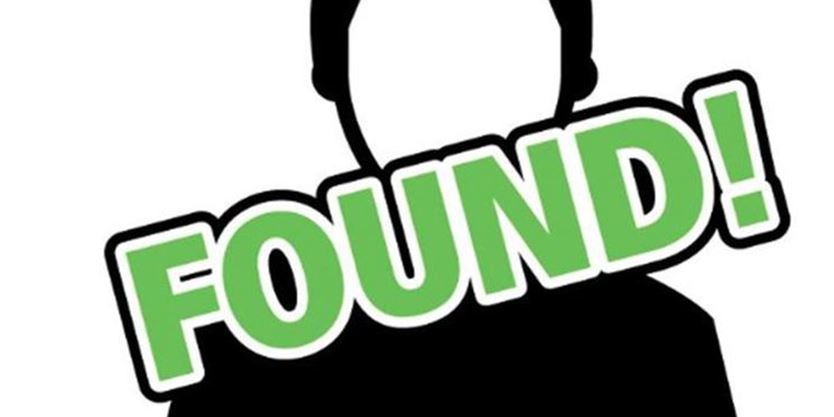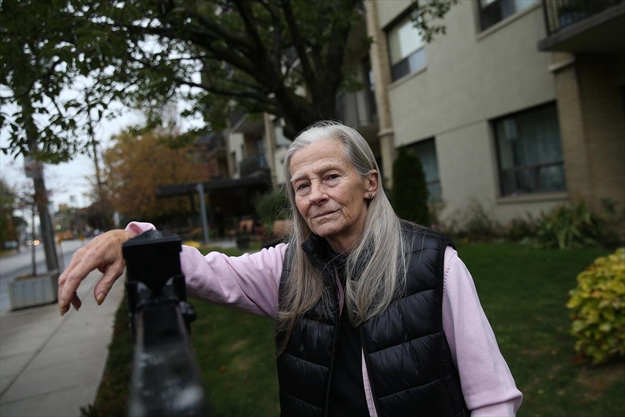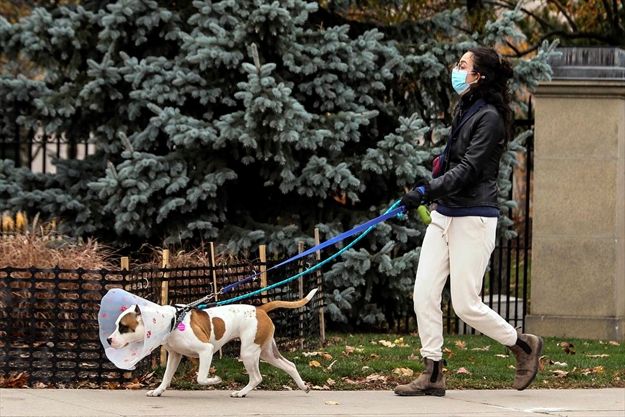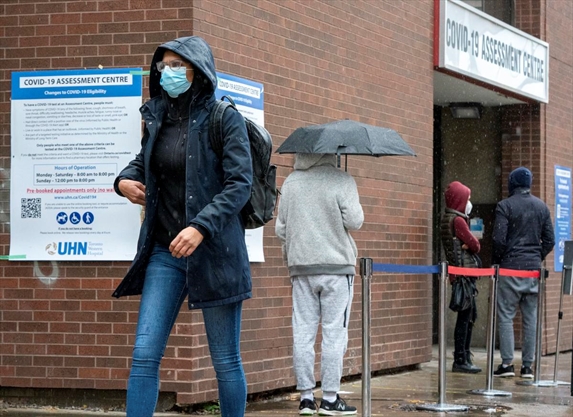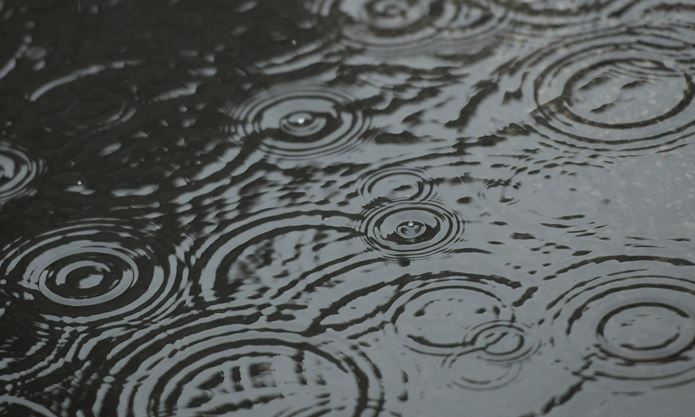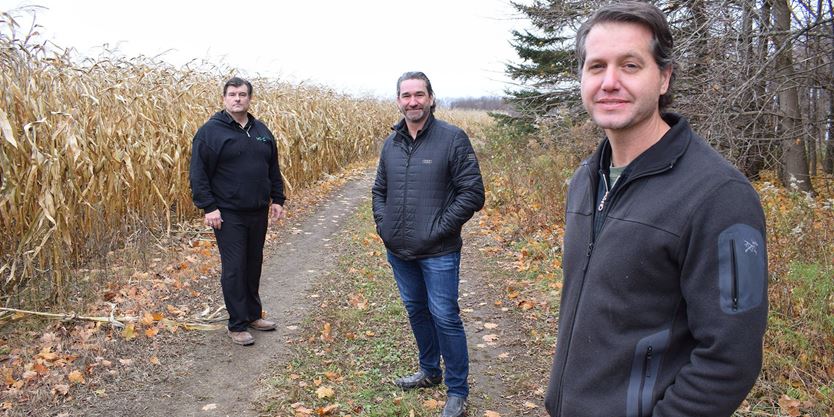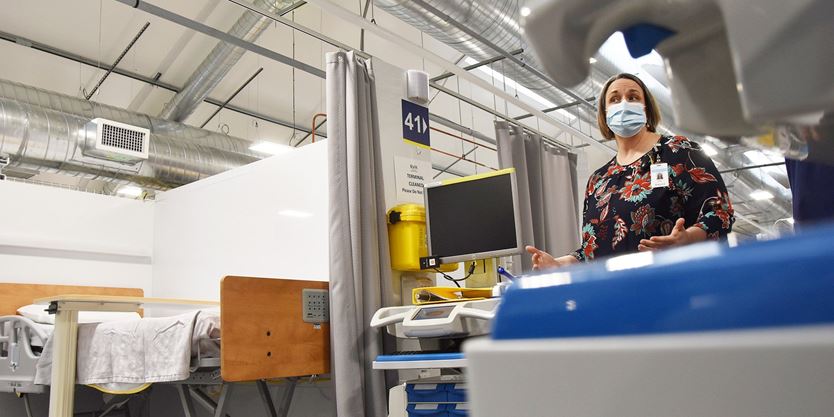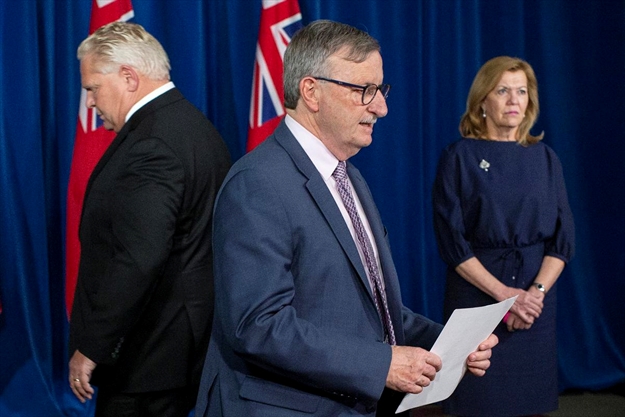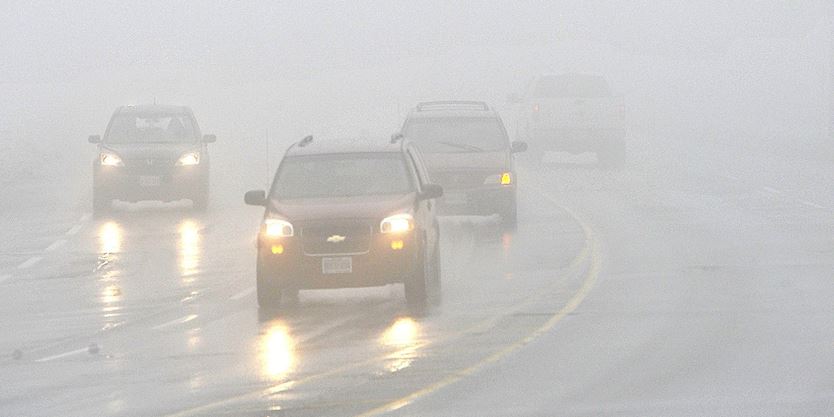The latest news from Canada and around the world Saturday. This file will be updated throughout the day. Web links to longer stories if available.
8:59 p.m.: Duke University is sometimes referred to as a pretty good knock-off of fancier schools farther north. But while those ivy-clad universities with smart students, prestigious medical schools and big endowments stayed closed this fall, Duke invited its freshmen, sophomores, some upperclassmen and all of its graduate students to its Durham, North Carolina, campus for largely in-person classes.
Now, it’s schooling those sniffier schools on how to reopen safely.
Starting Aug. 2 and continuing up to this week, when the Duke campus made a pre-planned reversion to online classes for the remainder of the semester, the university implemented a rigorous testing, tracking and surveillance program for more than 10,000 students. And it has carried out, on a grand scale, an innovative scheme — called pooled testing — that can stretch limited testing resources without forfeiting accuracy or resolution.
For Duke’s returning students, the result has been a relatively safe and almost normal return to learning, at a time when other colleges and universities either shuttered their campuses or ignited community outbreaks as they reopened with scant measures in place to detect or isolate infected students.
8:57 p.m.: The Food and Drug Administration has granted emergency authorization for the experimental antibody treatment given to President Donald Trump shortly after he was diagnosed with COVID-19, giving doctors another option to treat COVID-19 patients as cases across the country continue to rise.
The treatment, made by the biotech company Regeneron, is a cocktail of two powerful antibodies that have shown promise in early studies at keeping the infection in check, reducing medical visits in patients who get the drug early in the course of their disease. A similar treatment, made by Eli Lilly, was given emergency approval earlier this month.
The emergency authorization for Regeneron’s drug is limited in scope: It is for people who have tested positive for the coronavirus and who are at high risk for developing severe COVID-19. Evidence so far suggests that antibody treatments work best early in the course of the disease. Like Eli Lilly’s treatment, Regeneron’s is not authorized for use in people who are hospitalized or who need oxygen.
The emergency authorization raises questions about who will get access to the treatments as an average of more than 168,000 people are diagnosed each day with COVID-19 in the United States and hospitals are running out of beds. Regeneron has said it will have enough of the drug for only about 80,000 people by the end of November, enough for 200,000 patients by the first week of January, and 300,000 by the end of January. After that, the company said, it will be able to ramp up production thanks to a partnership with Swiss manufacturer Roche.
7:52 p.m.: Four provinces reported new highs for daily COVID-19 infections on Saturday as the virus continued its siege on some of the country’s most vulnerable areas.
Health officials in New Brunswick, Ontario, Saskatchewan and Alberta all reported new single-day peaks in diagnoses, recording 23, 1,588, 439 and 1,336 new cases respectively, as the nation’s top doctor sounded the alarm yet again.
“More and larger outbreaks are occurring in long term care homes, congregate living settings and hospitals, and spreading in Indigenous communities,” Dr. Theresa Tam said in a written statement.
“These developments are deeply concerning as they put countless Canadians at risk of life-threatening illness, cause serious disruptions to health services and present significant challenges for areas not adequately equipped to manage complex medical emergencies.”
7:31 p.m.: Housing Secretary Ben Carson is crediting unapproved, experimental treatments with saving his life after he became “desperately ill” following his infection with the coronavirus.
There is no medical evidence that the treatments Carson cited worked.
A retired neurosurgeon, Carson said Friday that he believes he’s now “out of the woods.” He disclosed that his wife, Candy, also had COVID-19, the disease the coronavirus causes. Carson tested positive earlier this month.
Most people recover from the disease, which has killed more than 250,000 Americans and sickened more than 12 million, including President Donald Trump and members of his family.
In a statement posted on Facebook, Carson said he was “extremely sick” but saw “dramatic improvement” after taking a botanical treatment derived from the oleander plant. Carson said he has underlying conditions, which he did not specify, “and after a brief period when I only experienced minor discomfort, the symptoms accelerated and I became desperately ill.”
Carson said Trump was aware of his condition and “cleared me for the monoclonal antibody therapy that he had previously received, which I am convinced saved my life.”
The White House declined comment Saturday, instead referring questions about possible intervention into Carson’s medical care by Trump to the Department of Housing and Urban Development. HUD also declined to comment.
“I do believe I am out of the woods at this point,” said the secretary, who gave credit to Trump, the White House medical team and doctors at the Walter Reed military hospital.
6:45 p.m.: New York recorded a seven-month statewide high of 5,972 new coronavirus cases as numbers continue to soar in hotspots and upstate, Gov. Andrew Cuomo announced Saturday.
The shocking state caseload recorded Friday was the most for a single day since late April, when the city and metro area was still reeling from the deadly first wave of the pandemic.
“We are in no way immune to the problems we are seeing elsewhere and we are entering a very dangerous period with the cold weather and holidays approaching,” Cuomo said.
The avalanche of new cases came as the state recorded a new all-time record 207,000 coronavirus tests, of which 2.87 per cent were positive.
Thirty-four New Yorkers died Friday of coronavirus.
Mayor Bill de Blasio said coronavirus is continuing to spread in the city as cases rose again Saturday and the number of new hospitalizations jumped.
The city recorded 1,345 COVID-19 cases, up a bit from the previous day. New hospitalizations also rose to 118, up 15 per cent in just a day.
The rolling seven-day average positive test rate was 3.11 per cent, also up a hair and above the city’s self-proclaimed benchmark for closing city public schools.
“This weekend is critical to fighting back,” de Blasio tweeted.
6:15 p.m.: The U.S. Centers for Disease Control and Prevention has escalated its warning for cruise travel to the highest level and continued to recommend avoiding any trips on cruise ships worldwide.
The agency raised its warning to Level 4 from Level 3, citing “very high” risk of COVID-19 on cruise ships. Passengers are at increased risk of person-to-person spread of COVID-19 and should get tested and stay home for at least seven days after travel, according to its website.
“For most travelers, cruise ship travel is voluntary and should be rescheduled for a future date,” the CDC said.
The agency just last month provided a framework for cruise lines to plan for resuming operations. Under that order, passenger operations aren’t allowed during initial phases, and every ship must be certified by the CDC before travelers can board.
The eight-month shutdown has been catastrophic for the cruise line industry and its three biggest operators, Carnival Corp., Royal Caribbean Cruises Ltd. and Norwegian Cruise Line Holdings Ltd. Earlier this month, Carnival canceled additional trips as it works to meet CDC requirements, pausing U.S. operations through Jan. 31.
6:14 p.m.: Coronavirus cases are rising in almost every U.S. state. But the surge is worst now in places where leaders neglected to keep up forceful virus containment efforts or failed to implement basic measures like mask mandates in the first place, according to a New York Times analysis of data from the University of Oxford.
Outbreaks are comparatively smaller in states where efforts to contain the virus were stronger over the summer and fall.
The index comes from Oxford’s Blavatnik School of Government, where researchers track the policies — or lack thereof — governments use to contain the virus and protect residents, such as contact tracing, mask mandates and restrictions on businesses and gatherings. Researchers aggregate those indicators and assign a number from 0 to 100 to each government’s total response.
At its highest level of containment efforts, New York state scored an 80 on the index. At the beginning of November, most states were scoring in the 40s and 50s.
Many states in the Upper Midwest and Mountain West resisted more stringent control measures, like limits on gatherings and mask mandates. North Dakota, for example, made few efforts to contain the virus. After briefly ramping up restrictions — closing bars, restaurants, gyms, theaters and schools — in March, when most other states did, Gov. Doug Burgum reopened the state nearly fully in May. Now nearly 1 in 10 North Dakotans have tested positive — about one-third of those in the past two weeks — and 1 in 1,000 have died of the virus.
One of the biggest problems in the United States so far has been the lack of a coherent, cohesive national response, said Wafaa El-Sadr, a public health researcher at Columbia University. Without strong national guidance, states’ containment policies have varied widely. Since the spring, Maine mandated masks and had strict travel restrictions for out-of-state visitors; South Dakota, meanwhile, has never had a mask mandate and welcomed nearly a half-million people to the Sturgis motorcycle rally as well as its state fair, which attracted more than 100,000 visitors.
6:13 p.m.: Michigan now has more than 300,000 confirmed cases of COVID-19.
That is just fifteen days after surpassing 200,000 cases on Nov. 6.
Michigan first reached over 50,000 confirmed cases on May 15. In the late summer, Michigan reached over 100,000 confirmed cases. Six deaths were reported that Friday, Aug. 28.
Then, on Nov. 6 and shortly after Election Day, Michigan surpassed 200,000 cases. There were 43 deaths reported.
Now, during the second large surge of cases and just fifteen days later, the state reached 300,000 cases.
Michigan reported 101 new deaths from COVID-19 and 7,528 new positive cases for the coronavirus, according to Saturday’s update from the Michigan Department of Health and Human Services. Fifty-nine of the 101 deaths were found later in a regular records review to see if a COVID-19 infection contributed to one’s death.
The state now has 8,478 confirmed deaths and 302,705 confirmed cases since March.
Nationally, Michigan has the sixth highest number of COVID-19 cases, ranking fifth for COVID-19 deaths and tenth for COVID-19 hospitalizations, according to a Nov. 18 from MDHHS.
The state had a positivity rate of 11.30per cent Friday, reporting that 10,007 out of 88,526 diagnostic test results returned were positive.
Michigan has a fatality rate of 2.8per cent among known cases.
6:12 p.m.: Florida on Saturday added 8,410 new cases of COVID-19 to its pandemic tally, ending its worst week for infections since Aug. 1.
Department of Health records show 56,732 people tested positive for the virus over the past week, continuing a monthlong trend.
Florida’s surge is part of a nationwide wave that on Friday hit a pandemic record of 195,542 new cases across the country, according to Johns Hopkins University.
The state experienced a 49.2per cent increase over the 38,019 cases from the previous week. Two weeks ago, Florida had 34,530 people with new infections.
This week marks the most new cases for the state since the week ending Aug. 1. But it’s still below the weekly record of 83,058 cases set July 18.
The big question is, what comes next? Public health experts are warning of increasing cases and deaths across the nation as fall turns into winter.
6:11 p.m.: The Group of 20 summit opened on Saturday with appeals by the world’s most powerful leaders to collectively chart a way forward as the coronavirus pandemic overshadows this year’s gathering, transforming it from in-person meetings to a virtual gathering of speeches and declarations.
In a sign of the times, the traditional “family photo” of leaders in the summit was digitally designed and superimposed on a historical site just outside the Saudi capital, Riyadh, which would have hosted the gathering. The kingdom has presided over the G-20 this year.
The pandemic, which has claimed more than 1.37 million lives worldwide, has offered the G-20 an opportunity to prove how such bodies can facilitate international co-operation in crises — but has also underscored their shortcomings.
“We have a duty to rise to the challenge together during this summit and give a strong message of hope and reassurance,” Saudi Arabia’s King Salman said in the summit’s opening remarks.
While G-20 countries have contributed billions of dollars toward developing a vaccine for the virus, they have also mostly focused on securing their own vaccine supplies. Countries such as Britain, the U.S., France and Germany — all G-20 member states — have directly negotiated deals with pharmaceutical companies to receive billions of doses, meaning that the vast majority of the world’s vaccine supply next year is already reserved.
6:10 p.m.: More than 12 million people in the U.S have contracted the coronavirus since the start of the pandemic.
The nation’s total number of confirmed cases reached 12.01 million on Saturday, six days after the number had reached 11 million, according to a tally by Johns Hopkins University.
Daily numbers of new U.S. cases are approaching 200,000, less than three weeks after hitting 100,000 for the first time. The record of 195,542 new cases on Friday was the latest of several recent daily highs.
Deaths rates are getting closer to the dire numbers seen in the spring. The U.S. daily death toll exceeded 2,000 on Thursday, the first time since early May. On Friday, 1,878 deaths were reported.
The U.S. leads the world with more than 255,000 dead.
6:09 p.m.: As coronavirus cases surge globally, the COVID-19 deaths of two senior Serbian Orthodox Church clerics — one who died weeks after presiding over the funeral of the other — are raising questions about whether some religious institutions are doing enough to slow the spread of the virus.
More reports are emerging about people who attended religious services and contract the virus — some after parishioners seemed to ignore the pleas of church and health officials officials to wear masks, practice social distancing and other steps to combat the virus that’s killed nearly 1.4 million people worldwide.
In Belgrade, many mourners paying their respects Saturday to Serbian Orthodox Church Patriarch Irinej ignored precautions and some kissed the glass shield covering the patriarch’s body, despite warnings not to do so from Serbia’s epidemiologists.
That scene unfolded three weeks after the 90-year-old Irinej led prayers at the funeral of Bishop Amfilohije in nearby Montenegro, an event attended by thousands where many kissed the bishop’s remains in an open casket.
The highly publicized episodes happened as Serbia reported thousands of newly confirmed infections daily in the country of seven million and as the government in recent days has tightened measures to hold off the virus. As the country’s health system strains to treat more and more people for the virus, some patients in Belgrade hospitals with less serious conditions are being transferred to hospitals elsewhere.
Those same kinds of tough decisions and terrible predicaments are playing out all across the United States.
4:48 p.m.: At least three provinces have reported new highs for daily COVID-19 infections a day after the federal government’ urged Canadians to be more proactive in helping to bring the surging virus back under control.
Health officials in New Brunswick, Ontario and Saskatchewan all reported new single-day peaks in new diagnoses today.
New Brunswick recorded 23 new cases over the past 24 hours, Saskatchewan logged
439, and Ontario reported 1,588.
Case numbers climbed noticeably in three of Canada’s four Atlantic provinces, marking a sharp departure from recent trends which have seen infection counts stay relatively low.
The acceleration of the virus also continued in Nunavut, which saw 25 new cases today.
The surging numbers come a day after new federal modeling showed daily tallies could reach 20,000 nationwide if Canadians don’t drastically limit their contacts in a bid to stop transmission of COVID-19.
4:47 p.m.: Manitoba’s governing Progressive Conservatives defended their response to the COVID-19 pandemic Saturday, while also asking for priority access to rapid test equipment because the province’s numbers are so high.
“The second wave is upon us. Every province west of Nova Scotia has its highest numbers in the last few days, including Manitoba,” Premier Brian Pallister told delegates via video conference at the party’s annual general meeting. The meeting was a virtual one in order to abide by health orders that forbid large gatherings.
“Trying to make the political argument that Manitoba’s government missed the boat when everybody in the western world is under attack right now is not a fruitful thing — even if it was right, and it isn’t.”
During his 45-minute speech, Pallister pointed to the recent expansion of intensive care capacity, the tripling of COVID-19 daily tests since the spring, and the hiring of more workers to do contact-tracing of people who test positive.
“I don’t love COVID, but I love the opportunity that we have to prove that under fire, we are focused … on doing the absolute best we can to get the best possible outcome.”
A few hours later, Health Minister Cameron Friesen also cited investments the province has made to fight the novel coronavirus. But he also said the health-care system is being strained, and Manitoba should be given priority from the federal government for new testing equipment.
4:46 p.m.: Saskatchewan set another record for new COVID-19 cases on Saturday, Nov. 21, with 439 new cases reported.
The number of people in hospital has climbed to 91, from 85 the day before. New recoveries came in at 41. The 7-day average is now 203 new cases per day, a measurement the Ministry of Health said it would now be reporting.
On Nov. 8, that 7-day average was 97.6, meaning the average had doubled in 13 days, after having doubled from 45.7 in 16 days.
As of Nov. 21, 2,537 cases are considered active, 3,667 people have recovered and 33 deaths related to COVID-19 have been reported.
This is the first time in the last two months Saskatchewan has exceeded Manitoba for new cases in one day.
On the same day, Manitoba reported 385 new cases and 10 deaths. Manitoba’s 7-day average for new cases is now 407.4, which has remained relatively flat for the last nine days, between 390.0 and 407. 4 average cases per day.
North Dakota reported 1,526 new cases, and 16 more deaths. Its 7-day average is now 1,244.3, the lowest point it has been since Nov. 4. On Nov. 18, North Dakota’s 7-day average peaked at 1,415.7 cases per day.
Premier Scott Moe reacted in a Facebook post, saying, “Today’s record new case numbers are very concerning. Our seven-day average for new cases is now 203, which is the highest it has ever been.
“While it’s too soon for the new measures implemented last week to have made an impact, we are continuing to evaluate the situation closely and will consider further measures. Our government is working closely with Dr. (Saqib) Shahab and public health officials and will have more to say early next week.
“For now, let’s all do our part to keep ourselves and those around us safe. Reduce your number of contacts and your activity outside the home. If you do go out, wear a mask, which is now required in all indoor public places everywhere in Saskatchewan. Physically distance, wash your hands often, stay home when you can. We can keep ourselves and those around us safe and reduce the spread of COVID-19 by taking these steps,” he concluded.
3:45 p.m.: California enacts a nighttime curfew Saturday as spiking coronavirus cases threaten to swamp health-care systems and the state’s largest county warned that an even more drastic lockdown could be imminent.
The newest restrictions require people not on essential errands to stay home from 10 p.m. to 5 a.m. through Dec. 21, with a possible extension if rapidly worsening trends don’t improve. People will be allowed to shop for groceries, pick up food and even walk their dogs.
Authorities say the focus is on keeping people from social mixing and drinking — the kinds of activities that are blamed for causing COVID-19 infections to soar after dipping only a few months ago.
The curfew applies to 41 of the state’s 58 counties that are in the “purple” tier, the most restrictive of four state tiers allowing various stages of economic reopening. Those counties encompass 94 per cent of the nearly 40 million people living in the most populous U.S. state. California as a whole has seen more than 1 million infections, with a record of almost 15,500 new cases reported Friday.
2:36 p.m.: York Region Public Health issued a notice on Friday that six COVID-19 cases were connected to fitness classes held at Aurora Fit Body Boot Camp on 255 Industrial Parkway South.
“Individuals later confirmed to be COVID-19 positive attended fitness classes at this facility between Monday, November 9, 2020 and Saturday, November 14, 2020 between 5:45 a.m. to 7:30 a.m. each day,” read the notice.
Each class has a maximum of 8 individuals and the fitness facility has been following COVID-19 protocols, according to the notice. But during fitness classes, face coverings and masks aren’t worn by participants.
Anyone who attended any fitness classes at this location are advised to self-monitor until Nov. 29.
1:20 p.m.: Newfoundland and Labrador is reporting five new cases of COVID-19. One is a man in his 70s who is a tenant of a retirement home in the small town of Grand Bank, on the Burin Peninsula. Officials say there is now a cluster of six cases in Grand Bank, and all are connected. Newfoundland and Labrador now has 18 active cases of COVID-19 with one person in hospital.
1 p.m.: New Brunswick is reporting 23 new cases of COVID-19, the highest single-day jump in cases since the onset of the pandemic in March. Health officials say 16 of the new cases are in the Saint John region, six are in the Moncton region and one is in the Fredericton area. Both the Moncton and Saint John regions are under “orange” level public health restrictions under the province’s COVID-19 response plan. The province now has 71 active cases, with one person in hospital.
12:47 p.m.: Nova Scotia is reporting eight new cases of COVID-19, six of which are under investigation for their origin.
Public health officials say all of the latest cases are in the central zone of the province.
Officials say two cases are connected to previously identified diagnoses, but have not determined the origins of the other six.
Dr. Robert Strang, the province’s chief medical officer of health, says Saturday’s numbers show Nova Scotia’s biggest jump in cases in recent months. The number of active cases provincewide now stands at 33.
As of Monday, residents of Halifax and parts of Hants County will be asked to limit social gatherings to five people.
12:04 p.m.: As the coronavirus surges to record levels in Nevada, the governor has implored residents to stay home. But Democrat Steve Sisolak has also encouraged out-of-state visitors, the lifeblood of Nevada’s limping economy, to come to his state and spend money in Las Vegas.
The pandemic has put officials in this tourism-dependent place in a double-bind: trying to protect the economy while keeping people safe.
With the state seeing a record number of new cases, Sisolak said he’s on the brink of imposing new restrictions, but he’s walking a tightrope.
“I don’t want to shut down the entire economy if I can at all avoid it,” Sisolak told reporters on a phone call Wednesday. “We can keep everybody safe and accomplish both ends.”
Nevada’s tourism and hospitality industry has an estimated $67.6 billion economic impact, employing more workers and bringing in more state tax revenue than any other sector. Right now, it’s hurting and Nevada is facing a nearly 13per cent unemployment rate — the second highest in the U.S. behind Hawaii.
12 p.m.: It has been just over two weeks since Nunavut declared its first case of COVID-19, but it’s still unknown how 84 people were infected so quickly in the territory.
Nunavut is home to about 39,000 people. Its 25 fly-in only communities are spread over three time zones.
Arviat, on the western shore of Hudson Bay where about 2,800 people live, had 58 cases as of Friday. Dr. Michael Patterson, the territory’s chief public health officer, says it’s the only place where there’s evidence of transmission from household to household within the community.
There are also 13 cases in nearby Rankin Inlet, 11 in Whale Cove and two in Sanikiluaq. But those cases are all within the same households.
12:01 p.m.: Despite recent optimism over reported results from COVID-19 vaccine trials, virologists say there is still a long way from lab bench to bedside.
“You would think by this stage of the pandemic we would be leery and skeptical of science by press release,” said Ross Upshur of the University of Toronto’s Dalla Lana School of Public Health.
“The data that has been released was interim data,” said Alyson Kelvin of Dalhousie University. “The trials are still going on.”
Two companies, Pfizer and Moderna, have recently announced they’re developed COVID-19 vaccines that are 95 per cent effective. The news has juiced stock markets, induced politicians to call for expedited use and blown a breath of optimism to a world weary of masks and self-isolation.
11:45 a.m.: The latest numbers of confirmed COVID-19 cases in Canada as of 11:42 a.m. EST on Nov. 21, 2020:
There are 323,496 confirmed cases in Canada.
_ Quebec: 130,888 confirmed (including 6,806 deaths, 112,734 resolved)
_ Ontario: 102,378 confirmed (including 3,472 deaths, 86,079 resolved)
_ Alberta: 43,952 confirmed (including 462 deaths, 32,835 resolved)
_ British Columbia: 25,474 confirmed (including 331 deaths, 17,477 resolved)
_ Manitoba: 12,919 confirmed (including 207 deaths, 4,851 resolved)
_ Saskatchewan: 5,804 confirmed (including 33 deaths, 3,626 resolved)
_ Nova Scotia: 1,160 confirmed (including 65 deaths, 1,067 resolved)
_ New Brunswick: 401 confirmed (including 6 deaths, 343 resolved)
_ Newfoundland and Labrador: 311 confirmed (including 4 deaths, 294 resolved)
_ Nunavut: 84 confirmed
_ Prince Edward Island: 68 confirmed (including 64 resolved)
_ Yukon: 29 confirmed (including 1 death, 22 resolved)
_ Northwest Territories: 15 confirmed (including 10 resolved)
_ Repatriated Canadians: 13 confirmed (including 13 resolved)
_ Total: 323,496 (0 presumptive, 323,496 confirmed including 11,387 deaths, 259,415 resolved)
11:05 a.m.: Quebec is reporting 1,189 new cases of COVID-19 today and 32 additional deaths linked to the novel coronavirus. Public health authorities say five of those deaths occurred within the past 24 hours, with the rest taking place at an earlier date. The Health Department says there are currently 646 people in hospital, an increase of 22 from the previous day.
Of those, 99 people are currently in intensive care, an increase of three from yesterday.
10:57 a.m: The latest numbers of confirmed COVID-19 cases in Canada as of 10:52 a.m. EST on Nov. 21, 2020:
There are 322,307 confirmed cases in Canada.
_ Quebec: 129,699 confirmed (including 6,774 deaths, 111,326 resolved)
_ Ontario: 102,378 confirmed (including 3,472 deaths, 86,079 resolved)
_ Alberta: 43,952 confirmed (including 462 deaths, 32,835 resolved)
_ British Columbia: 25,474 confirmed (including 331 deaths, 17,477 resolved)
_ Manitoba: 12,919 confirmed (including 207 deaths, 4,851 resolved)
_ Saskatchewan: 5,804 confirmed (including 33 deaths, 3,626 resolved)
_ Nova Scotia: 1,160 confirmed (including 65 deaths, 1,067 resolved)
_ New Brunswick: 401 confirmed (including 6 deaths, 343 resolved)
_ Newfoundland and Labrador: 311 confirmed (including 4 deaths, 294 resolved)
_ Nunavut: 84 confirmed
_ Prince Edward Island: 68 confirmed (including 64 resolved)
_ Yukon: 29 confirmed (including 1 death, 22 resolved)
_ Northwest Territories: 15 confirmed (including 10 resolved)
_ Repatriated Canadians: 13 confirmed (including 13 resolved)
_ Total: 322,307 (0 presumptive, 322,307 confirmed including 11,355 deaths, 258,007 resolved)
10:30 a.m.: Ontario’s COVID-19 case numbers hit a new single-day peak today as the province reported 1,588 new instances of the virus in the past 24 hours.
Government figures also show 21 new deaths linked to COVID-19 in that period.
Health Minister Christine Elliott says there are 522 new cases in Peel Region, 450 in Toronto and 153 in York Region, with nearly 46,700 tests completed.
The province is also reporting that 513 people are hospitalized with COVID-19, with 87 on ventilators.
The latest figures bring the total of COVID-19 cases in Ontario to 102,378, with 3,472 deaths, and 86,079 cases resolved.
The new record comes as Toronto and neighbouring Peel Region will move into lockdown on Monday, under the toughest measures available in the province’s COVID-19 restriction system.
10 a.m.: Almost a month has passed since Diane McDonald last saw her mother, who lives next door.
Her sisters and cousin visit but besides them, she says, her door stays locked to keep others away.
Adjusting to the reality of social isolation is hard on people in Fond du Lac Denesuline Nation, one of Saskatchewan’s northernmost communities, located near the Northwest Territories boundary.
Two weeks ago, the fly-in community of about 1,000 people reported its first case of COVID-19.
As of Friday, it had 61 active cases and more than 300 close contacts were in isolation — about 30 per cent of the population.
9:29 a.m.: President Donald Trump said Saturday his eldest son, Donald Trump Jr., is doing “very well” in quarantine after becoming infected with the coronavirus.
“My son Donald is doing very well. Thank you!” the president tweeted, following Friday’s disclosure that the 42-year-old Trump scion had become one of the nearly 12 million Americans infected by the virus.
9:12 a.m.: Saudi Arabia’s King Salman opened on Saturday the Group of 20 summit as the coronavirus pandemic overshadows this year’s gathering of heads of state, transforming it from an in-person two-day meeting of the world’s most powerful leaders to a virtual gathering of speeches and declarations.
The pandemic, which has claimed more than 1.37 million lives worldwide, has offered the G-20 an opportunity to prove how such bodies can facilitate international co-operation in crises — but has also underscored their shortcomings. The G-20’s member-countries represent around 85per cent of the world’s economic output and three-quarters of international trade.
8 a.m.: Suddenly, things such as travel passes that vouch for your vaccination status, concerts that require a shot to get in the door, or even questions about whether business might refuse to serve the unvaccinated are no longer the purview of speculative fiction writers, but of policymakers, experts and members of the general public.
With doses expected to be scarce, at least at first, we appear set to enter a new era of uneven vaccine access, beginning the day the first doses become available, and ending when they become available to everyone.
That time in the middle? Likely to stretch at least a year in Canada, it will force us to confront questions about who gets a vaccine, when to keep track and how we might take our first tentative steps back to normalcy.
It could also, experts warn, give rise to inequities as the vaccine splinters society into the haves and the have nots.
7:54 a.m.: Households across the U.S. are once again filling grocery carts brimful in a second round of panic buying as the virus surges and states clamp down on economic activity. Defensive purchasing is affecting everything from paper towels to bacon. Even the world’s biggest retailer is reporting shortages of high-demand items, including cleaning supplies, breakfast foods — and the most important commodity in any bathroom.
“It really does have everything to do with what’s happening with Covid cases in any particular community,” Walmart’s chief executive officer, Doug McMillon, said on an earnings call in the past week. “We’re going to be able to respond in this instance better than we did in the first half of the year, although we’re still — as a total supply chain — stressed in some places.”
The new wave of pantry stockpiling hits about eight months after the March boom, meaning makers of packaged food and household items have had some time to prepare. General Mills Inc. added 45 external production lines through contractors this year, while Campbell Soup Co. spent $40 million to expand production of Goldfish crackers, a must for parents cooped up with toddlers. Still, at-home demand is surging, accelerated by a new wave of indoor-dining bans.
7:11 a.m.: Poland will allow shopping malls to reopen, while keeping restaurants, cinemas and schools closed as Prime Minister Mateusz Morawiecki asked for more patience until a virus vaccine arrives.
“We need 100 more days of solidarity,” Morawiecki told reporters on Saturday. “Now we need to ask of ourselves more than ever.”
Poland introduced a near-full lockdown earlier this month after Covid-19 infections surged in October, with daily deaths climbing to a record 637 earlier this week. Schools will remain closed until at least mid-January, while gyms, cinemas, theaters and restaurants won’t reopen before Dec. 27.
7:08 a.m.: Iran on Saturday shuttered businesses and curtailed travel between its major cities, including the capital of Tehran, as it grapples with the worst outbreak of the coronavirus in the Mideast region.
Top Iranian officials initially downplayed the risks posed by the virus outbreak, before recently urging the public to follow measures like wearing masks and avoiding unessential travel.
Iran has recorded daily death tolls of above 430 over the past five days. The Iranian Health Ministry said on Saturday that the total number of confirmed cases has risen to above 840,000.
7:02 a.m.: Madrid’s government will prevent traffic from entering or leaving the region from Dec. 4 to Dec. 14 in its latest step to control Covid-19 infection rates.
The move is aimed at limiting expected increased traffic volumes linked to public holidays on Dec. 7-8, the regional administration said Friday via Twitter.
While other Spanish regions have sought to curb infections by imposing stricter measures on movement, Madrid’s regional government is focusing its Covid-19 containment strategy on temporary border closures, a curfew and partial lockdowns in districts with the highest number of cases.
7:01 a.m.: Russia on Saturday reported a new daily high in the number of coronavirus infections and deaths.
The national coronavirus taskforce said 24,822 new cases were recorded over the past day, the fourth time in a week that a new high has been tallied.
It said a record 467 people died of COVID-19.
The surge in infections is straining Russia’s vast but underfunded health care system, with many infected people reportedly forced to search for sparse hospital beds.
Overall, Russia has recorded more than 2,064,000 cases and 35,778 deaths.
7 a.m.: After COVID-19 made it clear the EI system needed to change, the federal government hinted it would work toward bringing the program up to speed. The program is currently being bolstered by temporary changes meant to include more people affected by the pandemic, reducing the number of hours needed to qualify and boosting the wage replacement rate.
In the long run, experts say parental benefits need to be easier to access, offer higher rates, and incentivize both parents to take leave.
7 a.m.: A teenaged girl who set out with her grandmother and mother last spring on a 1,800-kilometre RV trip to seek her new lungs has received the life-changing operation in an era of COVID-related delays.
Tahlia Ali left Halifax on May 20 after receiving word that medical specialists preferred she be near the University Health Network and the Hospital for Sick Children in Toronto as the pandemic continued.
In June, when she last spoke to The Canadian Press, the 16-year-old said she felt ready for the oft-delayed operation, as her energy levels had fallen.
Her grandmother, Judy Robichaud, describes the double lung transplant performed on Monday as “very successful.”
She says the initial surgery to repair two holes in Tahlia’s heart was somewhat more difficult than expected because the heart was more enlarged than anticipated. Robichaud estimates the dual operations required 13 hours.
6:01 a.m.: Prime Minister Justin Trudeau’s effort to try and bring rivals onside to help communicate the dramatic implications of rising COVID-19 infections appears to have faltered.
While Trudeau stood in front of his home Friday and implored Canadians to stay in theirs, opposition leaders didn’t echo that message.
Trudeau had given them a briefing late Thursday on the new modelling data that predicts as many as 20,000 new cases a day by the end of December without urgent action.
6 a.m.: At the northeast corner of Queen Street East and Airport Road in Brampton begins a large stretch of multi-sized warehouses, factories and shops. On any given day, the movement of small and large trucks getting in, loading or unloading, and getting back out is about the only observable activity in the area, save from the occasional construction work. It’s kilometres in either direction before you reach residential parts of the neighbourhood, a mixture of multi-unit housing buildings and stand-alone or semi-detached homes.
This is the part of the GTA that has emerged as the most affected by .
Earlier this week, the Star reported that the , that is to say nearly one in five people here tests positive for the virus, based on analysis conducted by non-profit ICES. Peel region as a whole has a positivity rate of 9.8, which is the highest in the GTA.
6 a.m.: To look at Toronto’s latest job figures, you’d think the city’s economy had largely bounced back.
The numbers, which plummeted in the wake of the , have largely come back, from an average of 3.04 million jobs in May to an average of 3.4 million jobs for the three months ending in October, according to Statistics Canada data for the census metropolitan area.
And jobs in the information, culture and recreation sector during the same time period are higher even than they were last year — 178,000 compared to 153,500 in 2019.
A deeper look at the numbers that fuel the local economy, though, shows some industries have been devastated, namely the sectors that rely on people congregating.
5:36 a.m.: Singapore and Hong Kong on Saturday postponed the start of an air travel bubble meant to boost tourism for both cities, amid a spike in coronavirus infections in Hong Kong.
The travel bubble, originally slated to begin Sunday, will be delayed by at least two weeks, Hong Kong’s minister of commerce and economic development, Edward Yau, said at a news conference.
The arrangement is meant to allow travellers between the two cities to travel without having to serve a quarantine as long as they complete coronavirus tests before and after arriving at their destinations, and fly on designated flights.
Hong Kong reported 43 new coronavirus cases on Saturday, including 13 untraceable local infections.
4:06 a.m.: India has reported 46,232 new confirmed coronavirus cases in the past 24 hours, with the situation particularly alarming in New Delhi.
Intensive care wards and the capital’s main crematorium are near capacity, and health officials this week found the prevalence of infections in markets much higher than expected. The city has added an average of 6,700 cases each day in recent weeks.
The next two weeks in the post-festival season, including celebrations for the Diwali holiday, are going to be important in determining which way the virus will go. The Health Ministry on Saturday also registered 564 deaths in the past 24 hours, taking total fatalities up to 132,726.
4:06 a.m.: Japan is scaling back on the government-backed “GoTo” campaign to encourage travel and dining out, as the number of confirmed coronavirus cases reached a record for the third day straight on Saturday, at 2,418.
Prime Minister Yoshihide Suga announced the decision at a government panel on coronavirus pandemic measures.
Stressing the need for “utmost caution,” he said the campaign’s travel discounts will no longer apply to hard-hit areas, and discounts on eating out will end temporarily.
Japan has never had a total lockdown. It has had fewer than 2,000 deaths so far related to the coronavirus. But worries have been growing about a spike in infections over the three-day weekend. Monday is Labor Thanksgiving, a national holiday.
4:02 a.m.: South Korea has reported 386 new cases of the coronavirus in a resurgence that could force authorities to reimpose stronger social distancing restrictions after easing them in October to spur a faltering economy.
The figures released by the Korea Disease Control and Prevention Agency on Saturday raised the country’s total number of confirmed cases to 30,403, including 503 deaths.
More than 270 of the new cases have come from the Seoul metropolitan area, where health workers have struggled to track transmissions in schools, private tutoring academies and religious facilities.
4 a.m.: The latest numbers of confirmed COVID-19 cases in Canada as of 4:00 a.m. EST on Nov. 21, 2020:
There are 320,719 confirmed cases in Canada.
_ Quebec: 129,699 confirmed (including 6,774 deaths, 111,326 resolved)
_ Ontario: 100,790 confirmed (including 3,451 deaths, 84,716 resolved)
_ Alberta: 43,952 confirmed (including 462 deaths, 32,835 resolved)
_ British Columbia: 25,474 confirmed (including 331 deaths, 17,477 resolved)
_ Manitoba: 12,919 confirmed (including 207 deaths, 4,851 resolved)
_ Saskatchewan: 5,804 confirmed (including 33 deaths, 3,626 resolved)
_ Nova Scotia: 1,160 confirmed (including 65 deaths, 1,067 resolved)
_ New Brunswick: 401 confirmed (including 6 deaths, 343 resolved)
_ Newfoundland and Labrador: 311 confirmed (including 4 deaths, 294 resolved)
_ Nunavut: 84 confirmed
_ Prince Edward Island: 68 confirmed (including 64 resolved)
_ Yukon: 29 confirmed (including 1 death, 22 resolved)
_ Northwest Territories: 15 confirmed (including 10 resolved)
_ Repatriated Canadians: 13 confirmed (including 13 resolved)
_ Total: 320,719 (0 presumptive, 320,719 confirmed including 11,334 deaths, 256,644 resolved)
1:48 a.m.: Donald Trump Jr., the president’s son, tested positive for the coronavirus at the beginning of the week and has been isolating since Monday, a spokesman for Trump said Friday.
He added that Trump had shown no symptoms and was following virus protocols.
Trump is the latest person close to the president who has tested positive for COVID-19. Barron Trump, the president’s youngest son, tested positive last month. Melania Trump, the first lady, also tested positive in October. In July, Trump’s girlfriend, Kimberly Guilfoyle, tested positive.
Read about Thursday’s developments .

